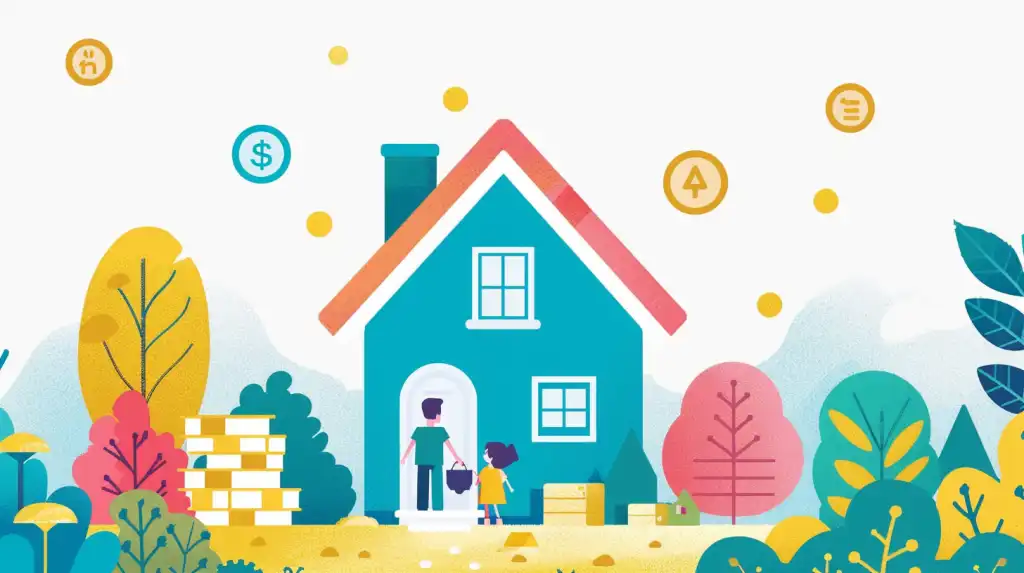09 August 2025
So, you're ready to buy a home. You’ve crunched the numbers, saved for a down payment, and even browsed through endless listings. But wait a second—buying a home isn’t just about the mortgage payment. There are plenty of hidden costs that can sneak up on you if you're not prepared. These expenses often catch first-time homebuyers off guard, and can sometimes make owning a home more expensive than renting.In this article, we’ll walk through the hidden costs of homeownership that you need to know before diving into the deep end of the real estate pool. Trust me, these costs can add up quicker than you'd think.
1. Property Taxes: The Never-Ending Bill

Let’s start with the big one: property taxes. When you own a home, you’re not just paying for the house itself but also for the privilege of owning land in your area. And that privilege? It comes with a hefty price tag.
What Are Property Taxes?
Property taxes are annual taxes that local governments charge based on the value of your home. Sounds simple enough, right? However, the tricky part is that property taxes can vary significantly depending on where you live. In some areas, they can be a few hundred dollars a year, but in high-tax areas, they may climb into the thousands.
They Can Go Up—A Lot
Here’s the kicker: property taxes aren’t set in stone. They’re based on the assessed value of your home, which can increase over time. If your neighborhood becomes more desirable or property values go up, your tax bill can skyrocket. Ouch! So, even if you budgeted for current property taxes, don’t be surprised if that number keeps growing.
2. Homeowners Insurance: The Price of Peace of Mind
While homeowners insurance may not be as sneaky as other costs, many people overlook how expensive it can be. Like any insurance, homeowners insurance is there to protect you from the unexpected—whether it’s a natural disaster, theft, or damage from a burst pipe.
What Does It Cover?
Homeowners insurance typically covers the structure of your home, your personal belongings, and liability protection in case someone gets injured on your property. But here’s the thing: the cost of insurance can vary significantly based on where you live and what you want covered.
For instance, if you live in an area prone to natural disasters like earthquakes or floods, you might need additional coverage that can send your premium soaring. And let’s face it, no one wants to skimp on homeowners insurance only to find out they’re underinsured when they need it most.
3. HOA Fees: A Monthly Surprise
If you’re buying a home in a community with a Homeowners Association (HOA), be prepared for monthly or annual fees. These aren’t optional, and they can add a significant expense to your budget.
What Are HOA Fees?
HOA fees are payments made to maintain common areas and manage amenities in your community. Think about things like landscaping, security, and possibly even a community pool or gym. In exchange, the HOA takes care of these services and helps ensure your neighborhood stays looking nice.
How Much Are These Fees?
HOA fees can vary widely depending on the community. Some might be as low as $50 a month, while others can be several hundred dollars. And here’s the kicker: some HOAs may also charge special assessments for major projects, like repaving roads or upgrading community facilities. These assessments can be a shock to your wallet if you’re not ready for them.
4. Maintenance and Repairs: The Never-Ending To-Do List
If you’ve ever rented, you probably loved the fact that when something broke, you just called the landlord, and boom—it was fixed. Well, when you own a home, those days are over. You’re the landlord now, and that means every broken appliance, leaky roof, or creaky floor is your responsibility.
The Cost of Keeping Things Running
Maintenance and repair costs can vary significantly depending on the age and condition of your home. Newer homes may need less maintenance upfront, but older homes could require constant upkeep. According to some estimates, you should budget about 1% to 4% of your home’s value each year for maintenance and repairs. So, if you own a $300,000 home, that's anywhere from $3,000 to $12,000 annually—just for keeping things in working order.
The Unexpected Repairs
And don’t forget about the surprise expenses. The hot water heater may die in the middle of winter, or your roof might spring a leak after a windy storm. These unexpected costs can add up fast, and there’s no way to predict when they’ll hit.
5. Utilities: More Than Just the Basics
Everyone knows they’ll have to pay for utilities, but many first-time homeowners underestimate just how much more energy it takes to run a house versus an apartment.
What Are You Paying For?
Expect to pay for electricity, water, gas, and possibly even trash collection. And if your home has a lawn, you might need to pay for lawn care services or run the sprinklers, which will add to your water bill.
Bigger Space = Bigger Bills
Larger homes generally use more energy, which means higher utility bills. Heating and cooling a bigger space can cost a fortune, especially if your home isn’t energy-efficient. And let’s not forget about those long winter nights when you’re running the heat 24/7 or the summer days when the air conditioning is blasting.
6. Pest Control: The Unexpected Guests
Ah, pests. Whether it’s ants in the kitchen, rodents in the attic, or termites munching away at your woodwork, dealing with unwanted critters can be a regular part of homeownership. Pest control is one of those expenses that people often forget about—until they need it.
Prevention Costs Money Too
Even if you don’t currently have a pest problem, it’s a good idea to invest in prevention. Regular termite inspections, for example, can help you avoid major structural damage. Pest control services can cost anywhere from $150 for a one-time visit to a few hundred dollars per year for preventative service plans.
7. Landscaping: Keeping Up Appearances
One of the perks of owning a home is having your own yard, but that also means you’re responsible for keeping it in shape. Landscaping might seem like a small expense, but it can quickly add up—especially if you want your lawn to look like it’s straight out of a magazine.
DIY or Hire a Pro?
If you’re the DIY type, you can save some money by mowing the lawn and trimming hedges yourself. However, if you want professional landscaping services, expect to pay anywhere from $50 to $200 per month, depending on the size of your yard and the services you need. And don’t forget about seasonal expenses like snow removal in the winter or leaf cleanup in the fall.
8. Closing Costs: The Final Hurdle
You’ve saved up for the down payment, but closing costs can be a nasty surprise if you’re not prepared for them. These are the fees associated with finalizing your mortgage and officially transferring ownership of the home.
What Do Closing Costs Include?
Closing costs typically include things like loan origination fees, appraisal fees, title insurance, and attorney fees. In general, expect to pay between 2% and 5% of your loan amount in closing costs. So, if you’re taking out a $250,000 mortgage, you could be looking at an additional $5,000 to $12,500 at closing.
9. Furnishing Your Home: Making It Yours
You’ve got the keys to the front door, but now comes the fun part—making your new house feel like home. While this isn’t a “hidden” cost per se, many new homeowners underestimate how much it will cost to furnish their entire house.
It All Adds Up
Beds, couches, dining tables, appliances, curtains, and rugs—these things don’t come cheap! Even if you go for budget-friendly options, furnishing an entire home can cost thousands. And if you want to splurge on high-end pieces, that number can easily climb into the tens of thousands.
Conclusion
Owning a home is a dream come true for many, but it’s not without its financial challenges. Beyond the mortgage, there are a host of hidden costs that can catch you off guard if you’re not prepared. From property taxes and homeowners insurance to ongoing maintenance and surprise repairs, the expenses can add up quickly.
The key to successful homeownership is knowing what to expect and budgeting accordingly. By planning for these hidden costs, you can avoid financial surprises and enjoy your home to the fullest. After all, your home should be a source of comfort and stability—not stress and debt.
Happy house hunting! 🏡


